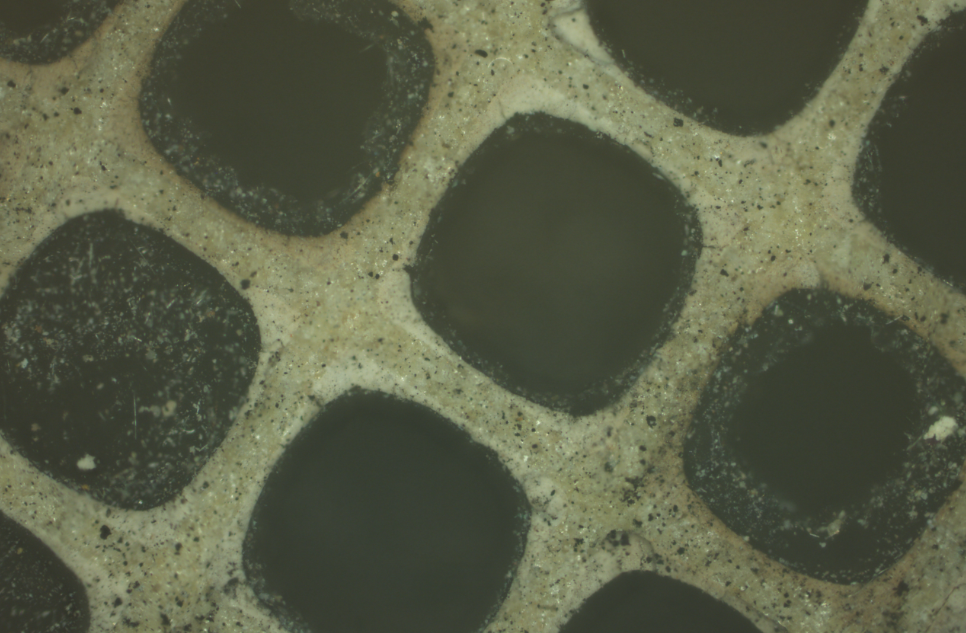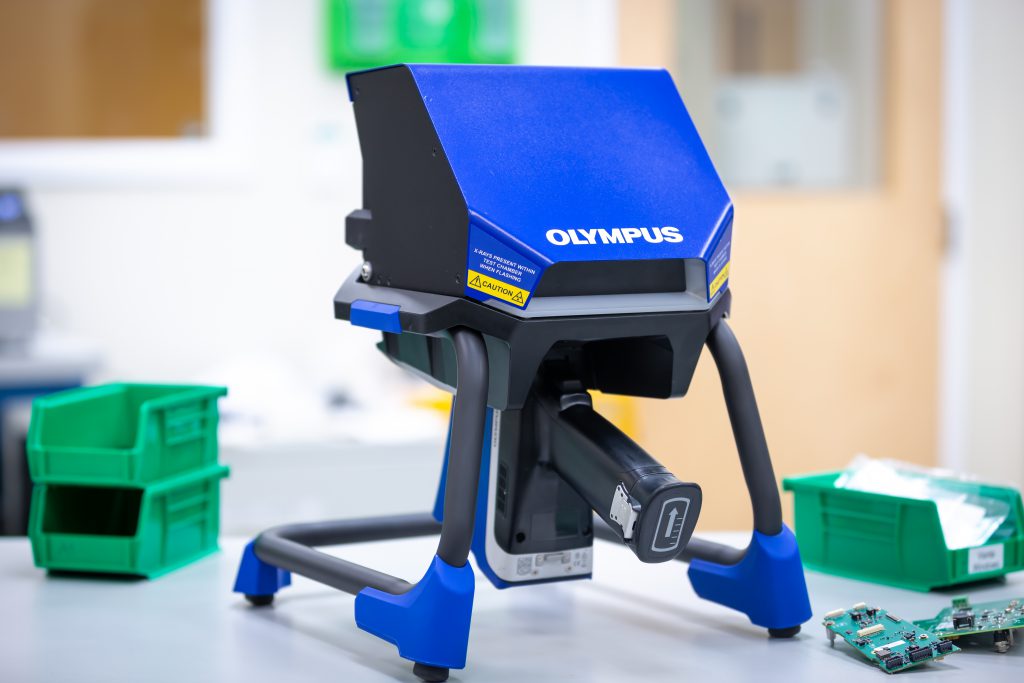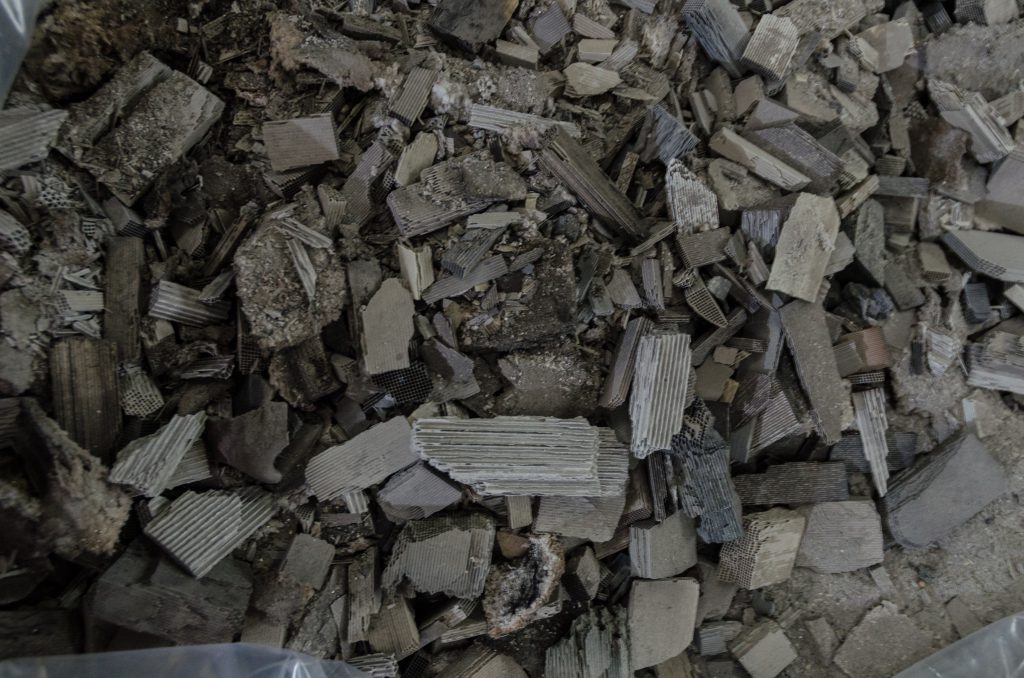Recycling of catalytic converters is a fast-growing industry that is both economically profitable and environmentally sustainable. However, accurate and reliable analysis of the precious metals contained within spent converters is crucial for industry development and the success of individual companies.
In this article, we catch up with Vladimir Vermus, X-ray fluorescence (XRF) and X-ray diffraction (XRD) specialist at Olympus, to discuss the role of XRF in the recycling process and discover how the advanced features of portable Vanta XRF analysers meet the challenges of recycling catalytic converters.
What is a catalytic converter?
Catalytic converters, also known as car cats, are devices which reduce the emission of pollutants from car exhaust gases into the atmosphere. These converters are cylindrical structures with an internal honeycomb structure that has a catalytic layer formed of platinum group metals (PGMs)— platinum (Pt), palladium (Pd), and rhodium (Rh)—which are deposited across the surface (Figure 1).
When unburned exhaust fume residues such as carbon monoxide (CO), hydrocarbon (CH), or nitrogen oxides (NOx) touch the surface of the catalytic layer, they are oxidised and neutralised by oxygen present in the exhaust fumes. However, as PGMs are precious metals, they are valuable, making recycling of catalytic converters a practical and economical method of achieving cleaner air.
‘The typical lifespan of a car cat is around 100 000 km (62 000 miles),’ says Vladimir Vermus. However, given the correct processing and analysis procedures, PGMs can get a second or even third life and be recycled into new converters. With 40% of all new catalytic converters formed with reprocessed PGMs, recycling of these devices is an intelligent solution to maintain sustainability, profitability, and cleaner air for the planet. Is PGM recycling environmentally sustainable? The PGMs with the highest ability to neutralise harmful exhaust gases are platinum and palladium.
The portable Vanta Work Station allows users to walk away while a test is in progress and maintains constant sample positioning for longer test times.



While platinum is used in other areas such as the production of magnets and jewellery, 90% of the palladium currently produced worldwide is used in catalytic converters. Palladium has a low extraction efficiency when mined but there is a growing need for reliable sources of this element, as Vermus explains: ‘Recent fuel standards such as China VI, Tier 3, Euro 6d, and Bharat 6 are all placing a greater emphasis on clean air. This means that the demand for palladium is expected to rise in the near future and makes car cat recycling crucial to meet the needs of manufacturers around the world.’
Recycling PGMs is, of course, more environmentally- friendly than mining them – the difference in the carbon footprint alone is tremendous. With sustainability pushed by many countries, PGM recycling offers an excellent long-term solution for catalytic converter production that minimises the environmental damage associated with mining.
How is XRF used for catalytic converter recycling?
XRF analysers can perform rapid elemental analysis, enabling users to accurately identify the concentration of Pt, Pd, and Rh in a spent catalyst in a matter of seconds. XRF devices such as Vanta analysers are also portable, which enables users to easily manage the diverse array of car cat materials that arrive for processing (Figure 3).
Having extensive experience working with companies that use portable XRF devices for car cat recycling, Vermus is clear about their benefits. ‘The fast and reliable analysis provided by portable XRF analysers enables users to quickly sort car cats into different groups based on parameters such as optimal PGM extraction processes and estimated purchase price. This helps users to maintain a steady flow of incoming material and accelerates the process of PGM extraction.’
As well as identification of PGMs, the Vanta XRF analyser series offers accurate measurement of 45 different elements from magnesium to uranium. However, the group of elements that are relevant for car cat recycling is much smaller and, in addition to PGMs, includes: tantalum (Ta), cerium (Ce), selenium (Se), tungsten (W), silicon (Si), zirconium (Zr), palladium (Pb), lanthanum (La), nickel (Ni), and sulphur (S). To ensure straightforward analysis of all these elements, Vanta analysers also offer a specialised Car Catalyst mode (CarCat).
‘Since 2019, the composition of raw, crushed catalytic matrix material present on the market has changed substantially,’ Vermus says. ‘The average concentration of PGMs has doubled and elements such as La, Ce, Hf, and Zr have also become more common. To give Vanta users confidence in the accuracy of their measurements, we continually develop our CarCat Calibration, adding new standards and algorithms that enable them to quickly adapt to changes in market trends.’
How should catalytic converters be prepared for XRF analysis? As 90% of all errors in XRF analysis are associated with incorrect sample preparation, following defined procedures for car cat prep is crucial for optimal recycling efficiency. Car cat recycling usually involves two types of samples: lump samples (whole or split body) and powder samples. As PGMs are unevenly distributed across the surface of the car cat’s honeycomb structure, lump sample tests can only provide an initial assessment, enabling separation of car cats by type and rejection of empty car cats that have already had PGMs removed.
This stage is particularly important when buying small batches of raw materials. After this stage of rough sorting (Figure 2), materials are sorted into large batches for further enrichment with additional stages of sample preparation. These stages can be summarised as follows: 1) rough sorting by type and rejection of pacifiers; 2) separate crushing of each group to a powder with particles of equal size; 3) homogenisation; and 4) sampling — which can involve using a press.
Over time, using this procedure can enable building of an extensive library of standard samples for comparison with incoming materials. One important parameter to consider during subsequent XRF analysis is humidity, according to Vermus.
‘Fluctuations in humidity of more than 10% can greatly affect measurement accuracy. After samples are obtained, an average of three to five tests should be used during XRF analysis. With appropriate sample preparation, the associated error range should be between 4 ppm–31 ppm.’
How do Vanta XRF analysers streamline the recycling process?
Portable Vanta analysers have multiple benefits for users working in car cat recycling, as Vermus explains: ‘For users who conduct regular analysis of a large volume of incoming raw material every day, it is important that the results obtained by the XRF device are consistent between lots. Vanta analysers have a high calibration accuracy, helping ensure optimal measurement accuracy, even with extended use.’
Olympus offers several Vanta models for car cat recycling. These models differ in their speed of analysis, sensitivity, and ability to determine light elements such as magnesium (Mg), aluminum (Al), silicon (Si), phosphorus (P), and sulphur (S). For example, with an analysis time of 40–60 seconds and capability to detect elements heavier than titanium, the Vanta L model with a silicon PiN detector is best suited for sorting raw materials by type.
In contrast, the Vanta C and M series have an analysis time of 15–20 seconds and are fitted with silicon drift detector (SDD) technology which enables detection of lighter elements. These models can be used to measure silicon carbide (SiC) content and enable more precise sorting of materials by sulphur content. In addition, all models can be used with the portable table Vanta Work Station, providing consistent sample positioning and efficient throughput (Figure 4).
As the market for spent car catalysts grows, car cat recycling companies are now faced with another challenge — unscrupulous sellers who try to raise the price for their raw materials by increasing their mass with lead-containing additives. Other more sophisticated methods are also possible, such as simulating XRF spectrum peaks for platinum by adding tantalum or selenium to the mixture.
However, as a specialist in XRF techniques, Vermus has absolute confidence in the accuracy of Vanta devices: ‘Whether inconsistencies in raw materials are intentional or not, the unique calibration system and precision of Vanta analysers can help avoid this confusion and prevent mistakes during raw material analysis.’
or companies with multiple engineers conducting analyses, the Axon Technology electronics of Vanta analysers ensure consistent measurement results between different devices, an important benefit that prevents conflicting assessment of elemental composition. Vanta devices also offer a ‘user factors’ button, which provides a quick and simple method to adjust the device for different matrices.
What of the future for catalytic converter recycling?
According to Vermus, the future direction of the car cat recycling industry is likely to involve more diverse analysis techniques: ‘As the industry evolves, silicon carbide and sulphur content will play an increasing role in determining the cost of raw materials. This will lead companies to choose devices with SDDs or even entirely new analysis equipment such as X-ray powder diffractometers (XRD). With Olympus’ TERRA II portable XRD analyser for example, users can obtain not only a quantitative estimate of SiC content, but also determine its specific phase.’
As the trend toward higher environmental standards continues across the world, the demand for PGMs can only grow. Choosing the correct XRF or XRD analysis equipment can help companies prepare for this coming wave of demand and give users confidence in their PGM measurements.
Would you like to share any interesting developments or article ideas with us? Don't hesitate to contact us.









